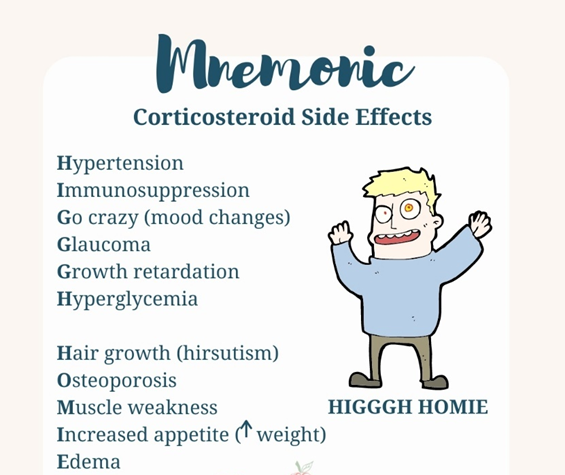Which of the following are the most common manifestations of COPD? (Select all that apply.)
Chronic cough
Sputum production
Dyspnea
Wheezing
Correct Answer : A,B,C,D
Choice A Reason:
Chronic cough is correct. Persistent cough is a common symptom of COPD, often occurring due to irritation and inflammation in the airways.
Choice B Reason:
Sputum production is correct. COPD patients frequently experience increased mucus production, leading to coughing up phlegm or sputum, especially in the morning.
Choice C Reason:
Dyspnea is correct. Shortness of breath or dyspnea is a hallmark symptom of COPD, particularly during physical activity or exertion, and it tends to worsen as the disease progresses.
Choice D Reason:
Wheezing occurs due to narrowed airways and increased airway resistance. It is more noticeable during expiration but can also be present during inspiration in severe cases.
Choice E Reason:
Chest tightness is incorrect. While chest tightness can occur in COPD, it is typically more associated with asthma. However, some individuals with COPD may experience chest tightness, especially during exacerbations or when airflow is significantly limited.
Nursing Test Bank
Naxlex Comprehensive Predictor Exams
Related Questions
Correct Answer is ["C","D","E"]
Explanation
Choice A Reason:
Bladder spasms are not commonly reported as adverse effects of methylprednisolone. However, bladder dysfunction can occur in individuals with multiple sclerosis due to the disease process itself, but it is not specifically related to corticosteroid therapy.
Choice B Reason:
Hypotension is not a common adverse effect of methylprednisolone. In fact, corticosteroids can often lead to fluid retention and sodium retention, which can contribute to hypertension rather than hypotension.
Choice C Reason:
Delayed wound healing is correct. Corticosteroids can impair the body's ability to heal wounds by suppressing the inflammatory response and collagen synthesis. Therefore, clients receiving methylprednisolone may experience delayed wound healing, which can be problematic, especially in individuals with pre-existing wounds or undergoing surgical procedures.
Choice D Reason:
Hirsutism (excessive hair growth, especially in women) can occur with long-term corticosteroid use due to the effect of steroids on hair follicles. It is a possible adverse effect of methylprednisolone.
Choice E Reason:
Hyperglycemia is correct. Corticosteroids can increase blood glucose levels by promoting gluconeogenesis, reducing glucose uptake by tissues, and inducing insulin resistance. Clients receiving methylprednisolone may develop hyperglycemia, which can be particularly concerning for individuals with diabetes or those at risk of developing diabetes.

Correct Answer is ["A","C","D","E","F"]
Explanation
Choice A Reason:
Asthma flare-ups during exercise is correct . Exercise-induced asthma is a common feature of nonallergic asthma. Physical activity can trigger bronchoconstriction and asthma symptoms in individuals with this type of asthma.
Choice B Reason:
Nasal inflammation is incorrect. Nasal inflammation is not typically a characteristic feature of nonallergic asthma. While nasal symptoms such as congestion, rhinorrhea (runny nose), and sneezing are common in allergic asthma due to the involvement of allergic rhinitis (hay fever), they are not typically prominent in nonallergic asthma. Nonallergic asthma primarily affects the lower airways (bronchi and bronchioles) rather than the upper airways (nose and throat). Therefore, nasal inflammation is not commonly associated with nonallergic asthma.
Choice C Reason:
No hypersensitivity to allergens is correct. Unlike allergic asthma, where exposure to allergens triggers asthma symptoms, individuals with nonallergic asthma do not have a hypersensitivity to allergens.
Choice D Reason:
Asthma flare-ups with NSAID administration is correct. Nonsteroidal anti-inflammatory drugs (NSAIDs) such as aspirin or ibuprofen can trigger asthma symptoms in some individuals with nonallergic asthma.
Choice E Reason:
Persistence of manifestations is correct. Nonallergic asthma tends to have persistent symptoms even in the absence of allergen exposure. Symptoms may occur regularly and may not have a clear seasonal pattern like allergic asthma.
Choice F Reason:
Positive response to corticosteroids is correct. Corticosteroids are often effective in managing nonallergic asthma. Individuals with this type of asthma typically respond well to corticosteroid treatment as part of their asthma management plan.
Whether you are a student looking to ace your exams or a practicing nurse seeking to enhance your expertise , our nursing education contents will empower you with the confidence and competence to make a difference in the lives of patients and become a respected leader in the healthcare field.
Visit Naxlex, invest in your future and unlock endless possibilities with our unparalleled nursing education contents today
Report Wrong Answer on the Current Question
Do you disagree with the answer? If yes, what is your expected answer? Explain.
Kindly be descriptive with the issue you are facing.
